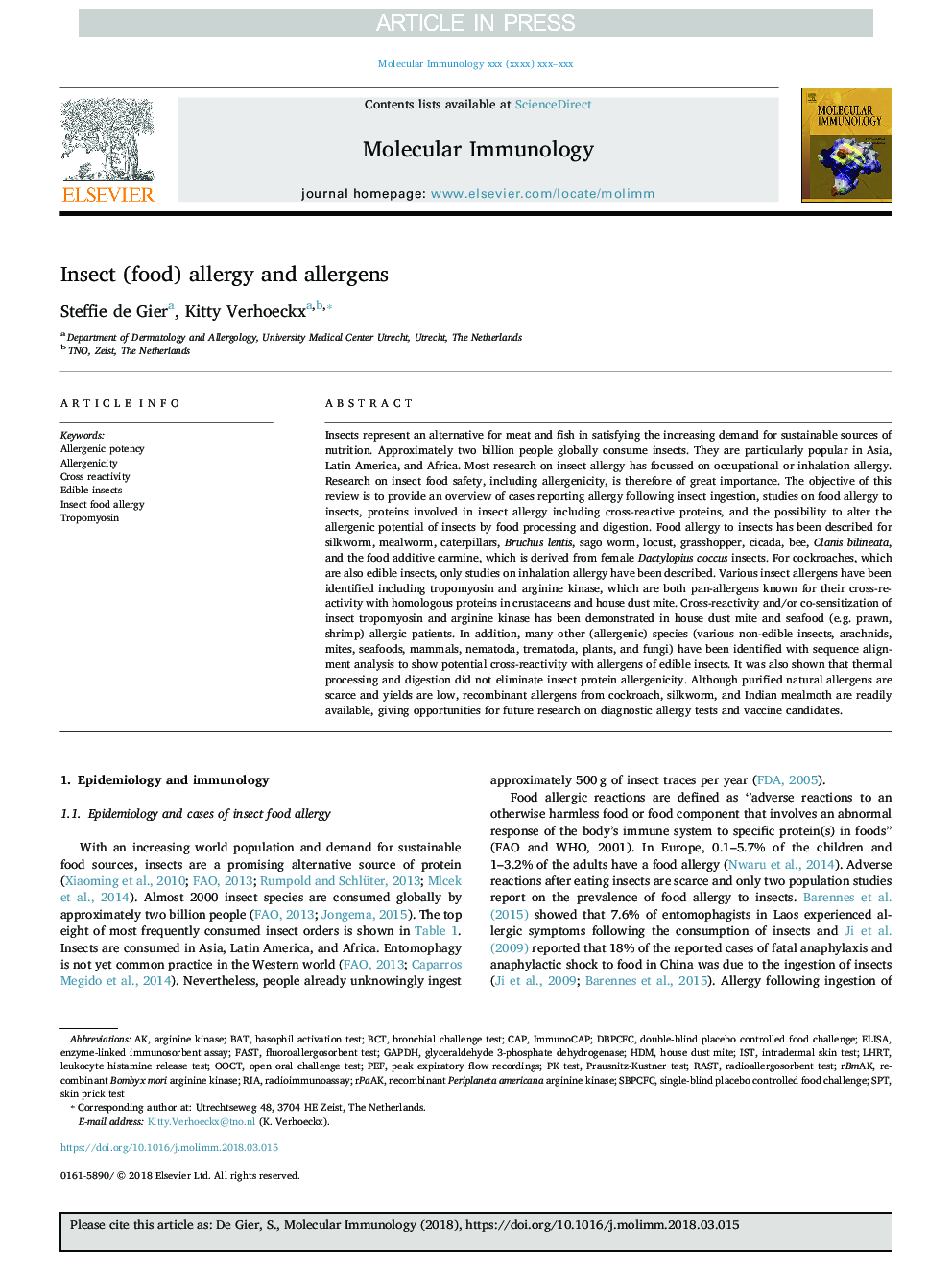| کد مقاله | کد نشریه | سال انتشار | مقاله انگلیسی | نسخه تمام متن |
|---|---|---|---|---|
| 8648479 | 1570693 | 2018 | 25 صفحه PDF | دانلود رایگان |
عنوان انگلیسی مقاله ISI
Insect (food) allergy and allergens
ترجمه فارسی عنوان
آلرژی و حساسیت به حشرات (مواد غذایی)
دانلود مقاله + سفارش ترجمه
دانلود مقاله ISI انگلیسی
رایگان برای ایرانیان
کلمات کلیدی
allergenic potencyBCTDBPCFCHDMRIAImmunoCAPSPTPEFBATGAPDHArginine kinase - آرژنین کینازintradermal skin test - آزمایش پوست پوستیBasophil activation test - آزمون فعال سازی بازوفیلBronchial challenge test - آزمون چالش برونشAllergenicity - آلرژن بودنIST - استTropomyosin - تروپومیوسینELISA - تست الیزاEnzyme-linked immunosorbent assay - تست الیزاSkin prick test - تست خراش پوستیradioallergosorbent test - تست رادیو ادرارEdible insects - حشرات خوراکیradioimmunoassay - رادیوایمونواسیRAST - رشدFAST - سریعCross reactivity - واکنش پذیری متقابلCaP - کلاه لبه دارHouse dust mite - گرد و غبار خانهglyceraldehyde 3-phosphate dehydrogenase - گلیسرولیدید 3-فسفات دهیدروژناز
موضوعات مرتبط
علوم زیستی و بیوفناوری
بیوشیمی، ژنتیک و زیست شناسی مولکولی
زیست شناسی مولکولی
چکیده انگلیسی
Insects represent an alternative for meat and fish in satisfying the increasing demand for sustainable sources of nutrition. Approximately two billion people globally consume insects. They are particularly popular in Asia, Latin America, and Africa. Most research on insect allergy has focussed on occupational or inhalation allergy. Research on insect food safety, including allergenicity, is therefore of great importance. The objective of this review is to provide an overview of cases reporting allergy following insect ingestion, studies on food allergy to insects, proteins involved in insect allergy including cross-reactive proteins, and the possibility to alter the allergenic potential of insects by food processing and digestion. Food allergy to insects has been described for silkworm, mealworm, caterpillars, Bruchus lentis, sago worm, locust, grasshopper, cicada, bee, Clanis bilineata, and the food additive carmine, which is derived from female Dactylopius coccus insects. For cockroaches, which are also edible insects, only studies on inhalation allergy have been described. Various insect allergens have been identified including tropomyosin and arginine kinase, which are both pan-allergens known for their cross-reactivity with homologous proteins in crustaceans and house dust mite. Cross-reactivity and/or co-sensitization of insect tropomyosin and arginine kinase has been demonstrated in house dust mite and seafood (e.g. prawn, shrimp) allergic patients. In addition, many other (allergenic) species (various non-edible insects, arachnids, mites, seafoods, mammals, nematoda, trematoda, plants, and fungi) have been identified with sequence alignment analysis to show potential cross-reactivity with allergens of edible insects. It was also shown that thermal processing and digestion did not eliminate insect protein allergenicity. Although purified natural allergens are scarce and yields are low, recombinant allergens from cockroach, silkworm, and Indian mealmoth are readily available, giving opportunities for future research on diagnostic allergy tests and vaccine candidates.
ناشر
Database: Elsevier - ScienceDirect (ساینس دایرکت)
Journal: Molecular Immunology - Volume 100, August 2018, Pages 82-106
Journal: Molecular Immunology - Volume 100, August 2018, Pages 82-106
نویسندگان
Steffie de Gier, Kitty Verhoeckx,
